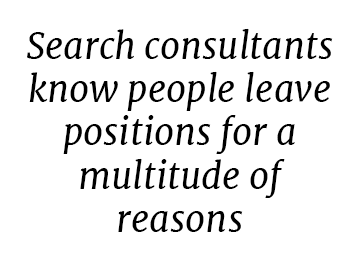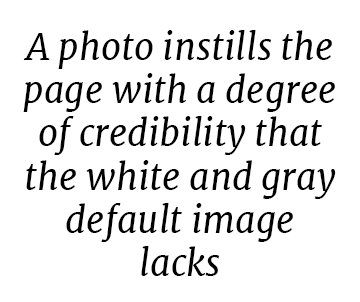


Emphasize results and explain experience.
When evaluating a candidate’s work history, executive search consultants are interested in understanding the scope of each role and the accomplishments achieved. It’s important to be specific, especially because many professional titles can be vague and vary by industry. Nonprofit leaders should include precise, metric-driven results for each position, mirroring the content of effective resumes. These details demonstrate impact and help candidates stand out in the crowd.
Differentiate between paid positions and board leadership roles.
Many seasoned nonprofit professionals have served on boards of other organizations. This is invaluable experience, attesting to the person’s commitment to mission-driven work and firsthand understanding of the volunteer perspective. However, listing board leadership alongside paid positions creates confusion for search consultants who seek to quickly synthesize a candidate’s work history. Board leadership absolutely belongs on a LinkedIn page—but in the “Volunteer” section, not the “Experience” section. As a general rule, professionals should follow the template LinkedIn provides to maintain a streamlined profile.

Again, the easier it is to track the timeline of a person’s career, the better. LinkedIn is formatted to make profiles easy-to-read. It works best when users enter as much information as possible, including not only the year a position began and ended, but the month as well. This is especially critical for experienced professionals—including nonprofit leaders—with long work histories.
Sometimes, people get nervous that a gap between roles will cause suspicion, so they attempt to disguise it by leaving off the month. At best, this causes confusion for an executive search consultant, and at worst, it creates a sense that the individual has something to hide. To avoid these unwanted consequences, always list the start and end dates. These details will come to light eventually, and search consultants know that people leave positions for a multitude of reasons. If a few-month gap is so disqualifying that a recruiter chooses not to reach out, that position wouldn’t have been a good fit anyway.
Update basic information when circumstances change.
This simple step is easy to forget in the rush of momentous life events. Switching jobs or sectors is not uncommon, but it’s crucial to update “Industry” when making a career change and “Location” when moving to a new city. Search consultants often apply filters on LinkedIn to narrow their research to a certain sector or geographic area. Without an up-to-date profile, professionals run the risk of being overlooked for a prime opportunity.

While some may opt to go photo-free to prevent discrimination, a picture reminds a search consultant they are looking at a real human being. Further, it gives the profile a more up-to-date appearance and instills the page with a degree of credibility that the white and gray default image lacks. The tricky part is choosing the right picture.
With its top-of-page placement, the photo makes the first impression on the viewer, increasing the importance of a well-chosen image. If they have access to one, nonprofit leaders should use a formal business headshot. For top-level executives, paying for a professional photographer can be a worthy investment. Alternatively, a smartphone and a photography-savvy friend can also achieve the right look. Follow these recommendations to capture an effective shot:
Give interested parties a way to reach out.
LinkedIn is a social network. Its essential function is to provide a way for professionals to connect with each other, so search consultants should be able to contact candidates through their profiles. Recruiters are fairly adept at digging for this info, but many profiles fail to list an email address or phone number, don’t accept InMail, and don’t allow an outsider to “connect.” To give search consultants a way to reach out, professionals should always include an updated email address and consider adding a phone number. Listing this information under “Contact Info” will only allow current connections to see it; including these details in the “Summary” or “Additional Info” sections will make them visible to others.
Worried about spam? Substitute symbols with words in your email address:
<emailaddress> (AT) <something> (DOT) <com>
At the very least, all profiles should be set up to accept InMail from non-connections: the “Introductions and InMail” setting should be checked within the “Communications” section of “Privacy and Settings.” Remember, it doesn’t matter how impressive a candidate’s profile may be to an executive search consultant if they can’t contact the candidate.
Ultimately, the skills and experience of nonprofit leaders are still the keys to success. LinkedIn is simply a tool in the networking pursuit. When used correctly, it can help professionals broadcast their best selves, make lasting connections, and advance their careers.